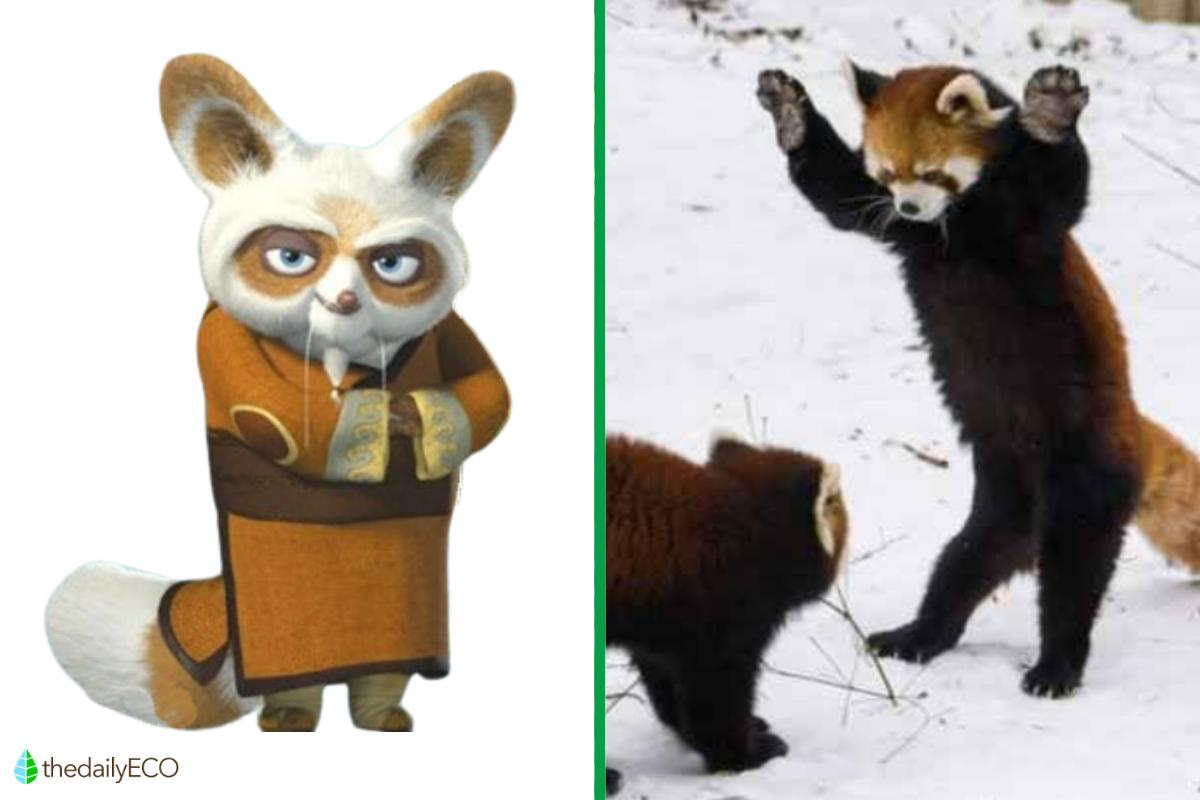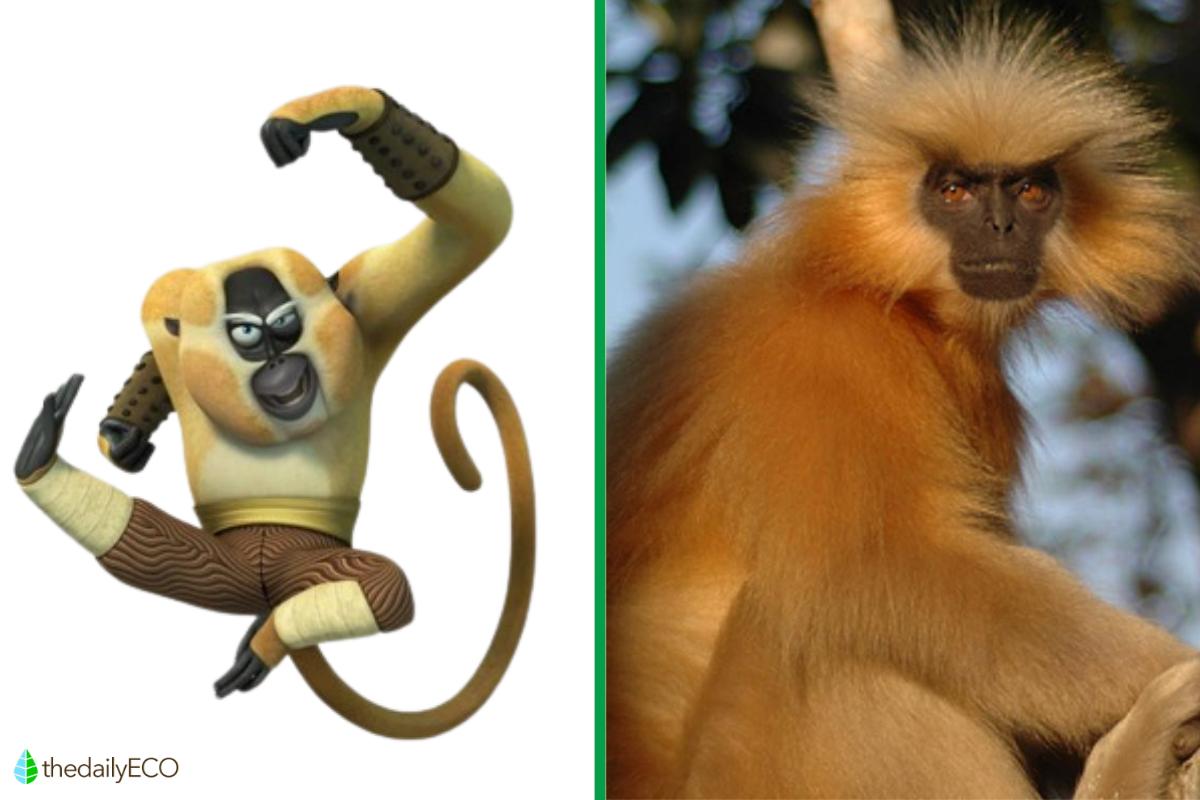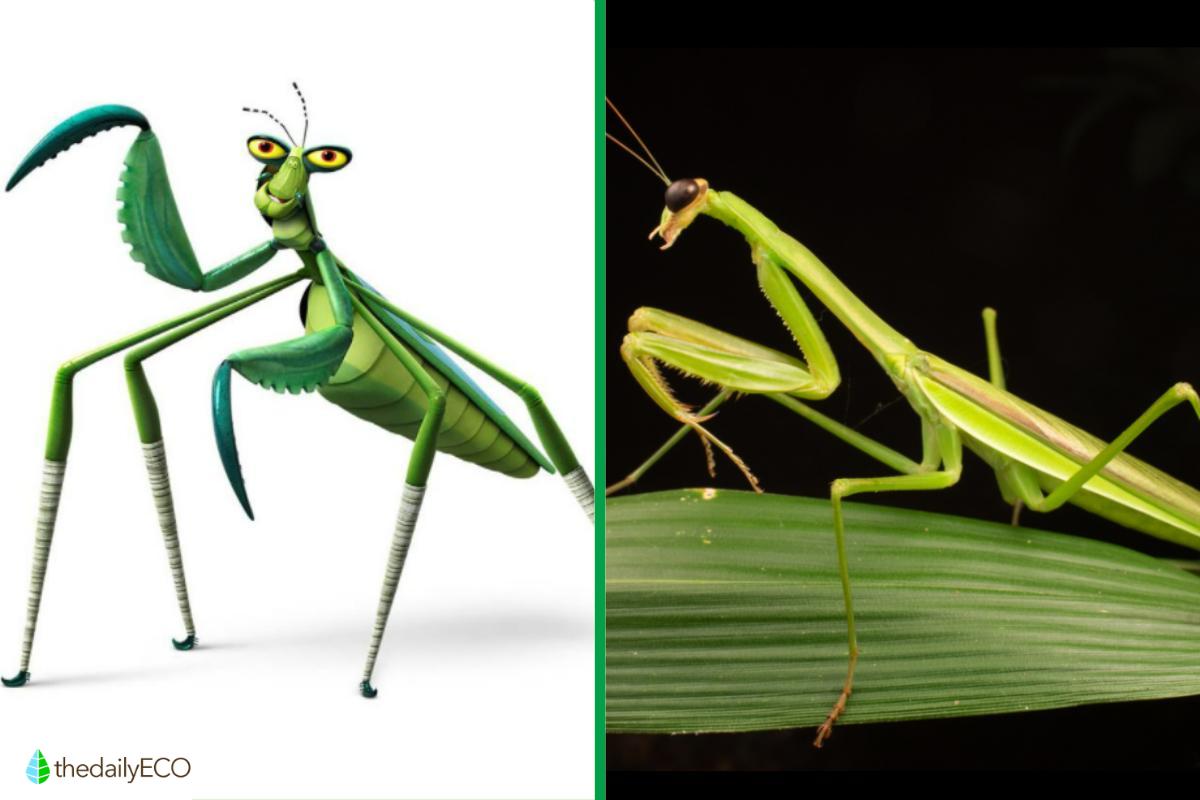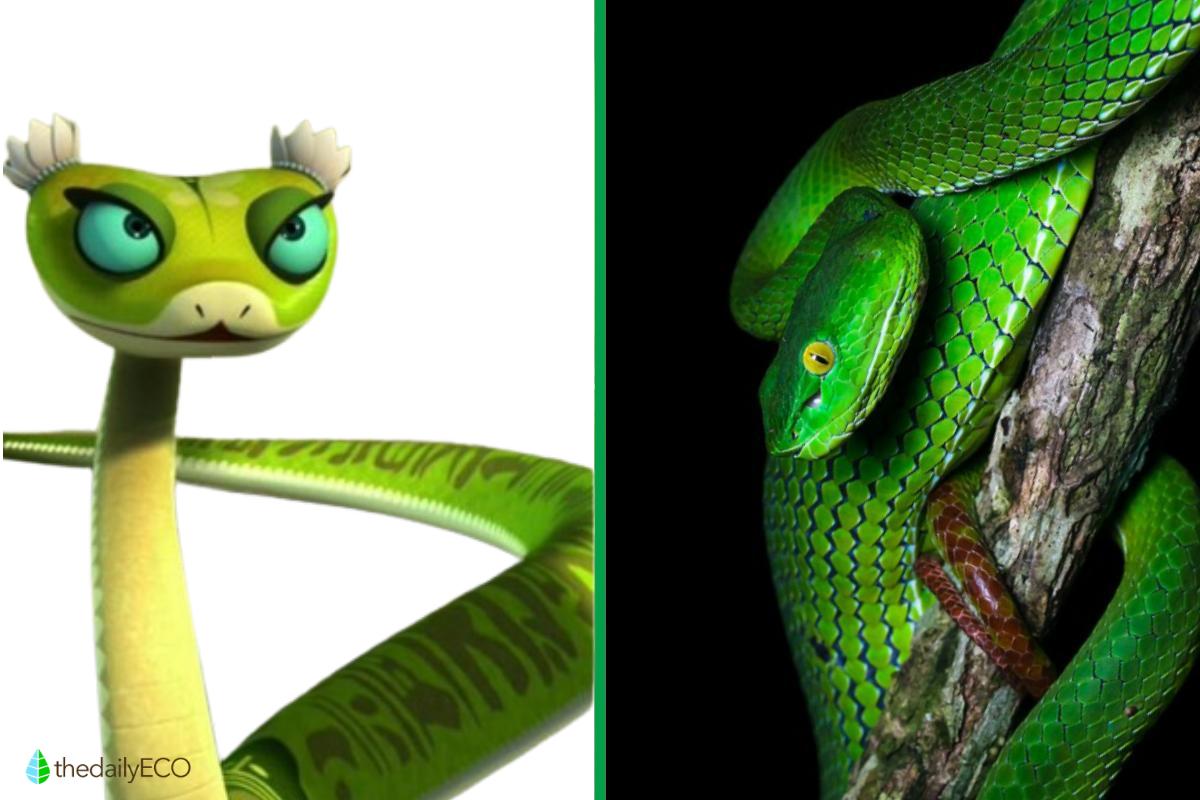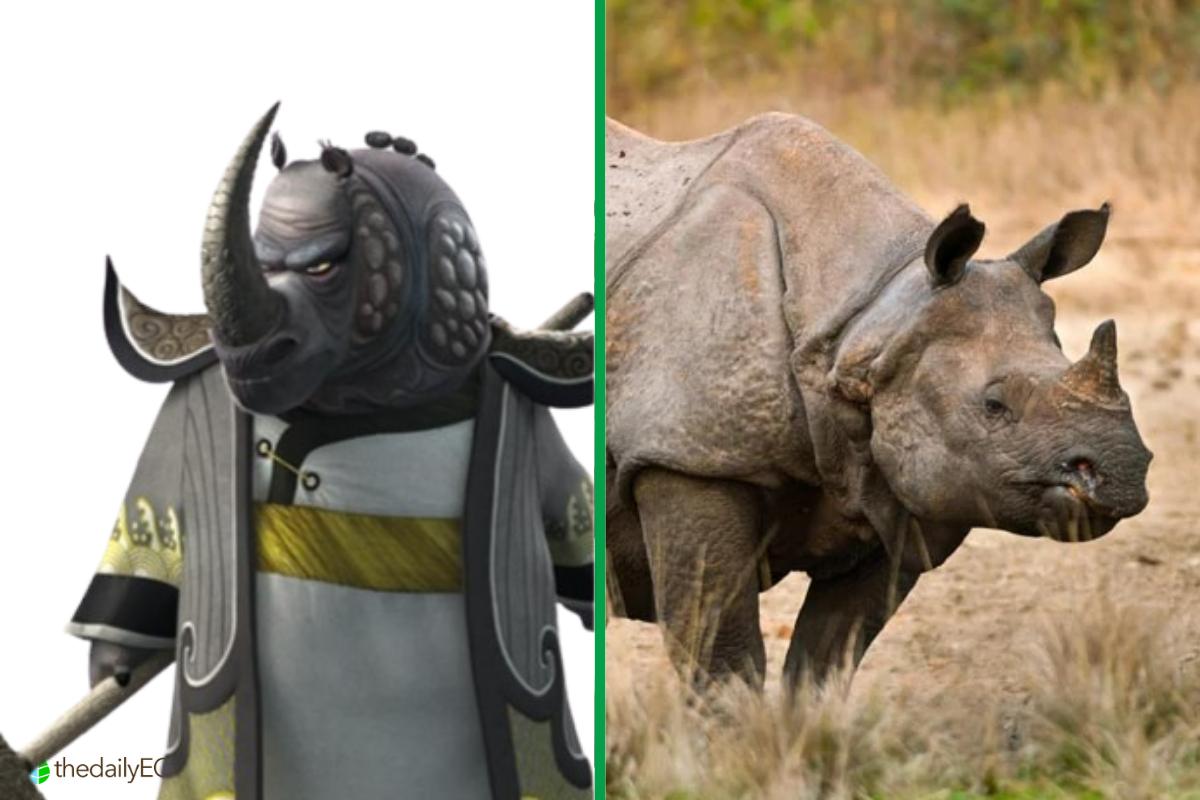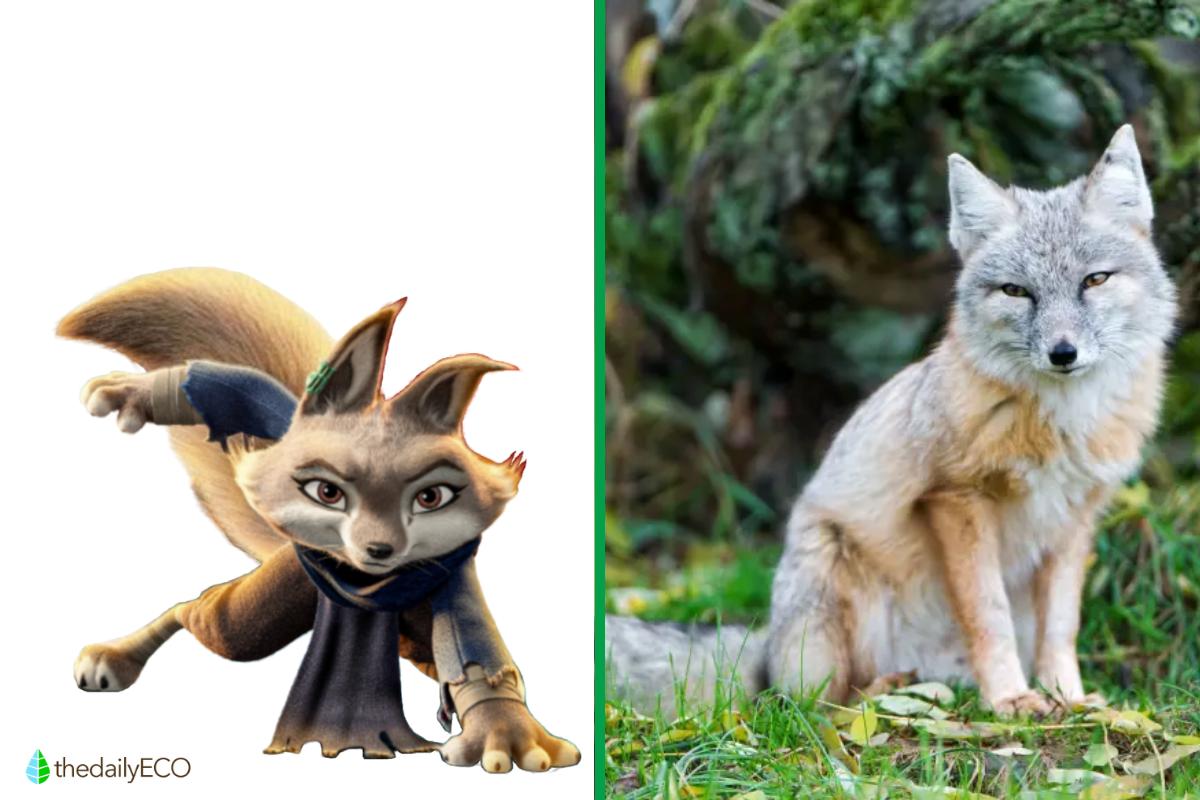Exploring the Animals of Kung Fu Panda


The Kung Fu Panda franchise has captivated audiences of all ages with its blend of action, humor, and heart. Spanning four films (and potentially more!), the saga takes place in the idyllic Valley of Peace, a place inspired by Ancient China but inhabited by a most unusual cast – animals who are masters of Kung Fu. Each character in Kung Fu Panda is inspired by a real-life animal, bringing a unique visual style and personality to the story. Curious about the real-life counterparts of Po, Tigress, Monkey, and the Furious Five? You've come to the right place!
This article by thedailyECO dives into the fascinating world of Kung Fu Panda animals, revealing the inspiration behind each warrior.
- Po (Giant Panda)
- Master Shifu (Red Panda)
- Grandmaster Oogway (Galapagos Tortoise)
- Tigress (South China Tiger)
- Monkey (Gee's Golden Langur)
- Crane (Red-crowned Crane)
- Mantis (Praying Mantis)
- Viper (Green Tree Viper)
- Tai Lung (Snow Leopard)
- Master Thundering Rhino (Rhinoceros)
- Master Croc (crocodile)
- Master Storming Ox (Water Buffalo)
- Master Thundering Rhino (Rhinoceros)
- Mr. Ping and Zeng (Goose)
- Li Shan (Giant Panda)
- Lord Shen (Indian peafow)
- The Soothsaye (Goat)
- Zhen (Corsac fox)
- The Chameleon (Chameleon)
Po (Giant Panda)
Po, also known as Master Po, stars as the protagonist of the film, drawing inspiration from the giant panda bear (Ailuropoda melanoleuca).
Giant pandas are native to a few mountain ranges in central China, including the provinces of Sichuan, Shaanxi, and Gansu. These areas are characterized by temperate broadleaf and mixed forests, which serve as the primary habitat for pandas and their main food source, bamboo. However, human activities such as farming, deforestation, and urbanization have significantly reduced the pandas' habitat to these remote mountain regions.
Despite his clumsy yet endearing nature, Po emerges as an unexpected hero. Pandas are typically known for their peaceful disposition and affinity for bamboo. However, Po's unexpected selection as the Dragon Warrior hints at the hidden potential and immense strength pandas possess.
Giant pandas were once "Endangered" but are now "Vulnerable" thanks to conservation efforts. While improved, "Vulnerable" still indicates a need for continued protection.

Master Shifu (Red Panda)
Master Shifu, Po's strict but caring master, is a red panda bear (Ailurus fulgens). Despite their shared name and dietary similarities, the red panda (Ailuridae) and giant panda (Ursidae) belong to distinct taxonomic families. Red pandas are more closely related to mustelids, a group that includes raccoons, weasels, and skunks, than they are to bears.
Red pandas are smaller and more agile than giant pandas, relying on their quick movements and sharp claws for defense. Master Shifu's fighting style likely reflects his animal counterpart - precise, fast-paced techniques that emphasize precision and control over brute force.
Red pandas, unlike giant pandas, are "Endangered". They dwell in the high-altitude bamboo forests of the eastern Himalayas, across Nepal, India, Bhutan, Myanmar, and China. Habitat loss due to deforestation and climate change, along with some poaching, threatens their survival. Conservation efforts focus on protecting their habitat, reducing poaching, and breeding programs for potential reintroduction.

Grandmaster Oogway (Galapagos Tortoise)
Grandmaster Oogway, the revered leader of the Jade Palace and the selector of the Dragon Warrior, draws inspiration from the giant tortoises of the Galapagos Islands, particularly the Chelonoidis nigra species. The islands offer a unique environment with diverse vegetation zones, providing the tortoises with a variety of plants and grasses to graze on.
These tortoises, known for their remarkable longevity and deliberate movements, reflect Oogway's wisdom and patience. If depicted, Oogway's fighting style might emphasize masterful defense and the strategic use of his shell and slow yet powerful movements. His slow movements could be a calculated strategy, allowing him to wait for the right moment to strike with surprising force.
Unfortunately, despite their resilience, the Galapagos tortoises faced threats from human activity. The conservation status for different subspecies of the Galapagos tortoise varies, but overall, they are listed as Vulnerable by the IUCN Red List.
Want to know a fun fact about turtles? They don't actually have teeth! Dive deeper in our other article to discover how they manage to eat without them.

Tigress (South China Tiger)
Master Tigress, a member of the Furious Five and the adopted daughter of Master Shifu, is modeled after the South China tiger species (Panthera tigris amoyensis).
Known for her bravery and natural disposition, Tigress embodies the fierce and disciplined characteristics associated with tigers. Furthermore, tigers are renowned for their power and speed as solitary hunters, serve as the inspiration for Tigress's persona.
In Kung Fu Panda, her fighting style mirrors the predatory nature of real tigers, emphasizing swift and forceful strikes. Tigress utilizes her strength and agility to confront challenges with determination, akin to a tiger pursuing its prey with relentless ferocity.
The South China tiger is sadly extinct in the wild. These magnificent creatures, once inhabiting the southern forests of China, fell victim to habitat loss, poaching, and prey depletion. Hope remains through captive breeding programs, but their future hinges on continued conservation efforts.
Stripes come in all shapes and sizes! Explore the variety of tiger species with our comprehensive guide to the different types of tigers.

Monkey (Gee's Golden Langur)
Master Monkey, a member of the Furious Five, draws inspiration from the endangered species of golden langur (Trachypithecus geei), found in select regions of India and Bhutan.
Characterized by his mischievous, friendly, and enthusiastic demeanor, Monkey reflects the playful nature associated with golden langurs.
Golden langurs are renowned for their remarkable agility and adeptness at traversing dense forests. Golden langurs dwell in high-altitude broadleaf forests, typically between 1,500 and 3,500 meters above sea level.
In the world of Kung Fu Panda, Monkey's fighting style likely mirrors his real-life counterparts, emphasizing agility and acrobatics. By leveraging his nimbleness and skillful movements, Monkey can outmaneuver opponents and deliver strikes from unexpected angles, making him a formidable member of the Furious Five.
Sadly, the golden langur is classified as Endangered on the IUCN Red List. Their main threats include habitat loss due to deforestation and expansion of agriculture. Hunting and capture for the pet trade also pose a risk to their population.
Want to unlock the secrets of our closest animal relatives? Our other article dives deep into the fascinating world of primates.

Crane (Red-crowned Crane)
Master Crane, a member of the Furious Five, embodies the serene and decisive qualities associated with the red-crowned crane (Grus japonensis), native to China and Japan.
Red-crowned cranes are known for their impressive migrations, traveling long distances between breeding grounds in Siberia and wintering grounds in China, Korea, and Japan. In many East Asian cultures, the red-crowned crane is revered as a symbol of luck, longevity, fidelity, and happiness. Their graceful movements and long lifespans inspire awe and respect.
Renowned for their grace and poise, cranes inspire Crane's wise and elegant persona. In combat, Crane's fighting style likely prioritizes defense, employing graceful kicks and maneuvers that emphasize balance and deflection of attacks.
Unfortunately, the red-crowned crane is classified as Endangered on the IUCN Red List. Habitat loss due to wetland degradation, pollution, and conversion for agriculture is a major threat.
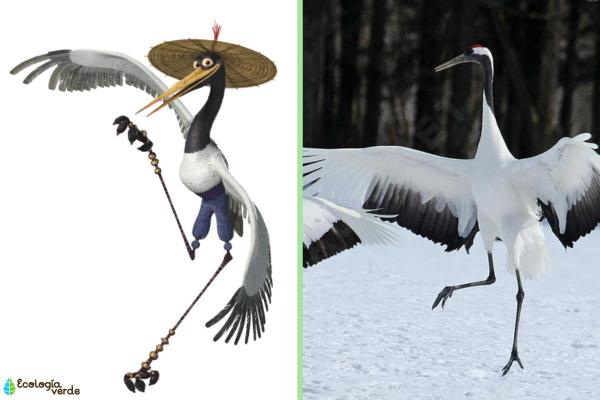
Mantis (Praying Mantis)
Master Mantis, also known as the Dragon Warrior, is a key member of the Furious Five and an expert in acupuncture. Notably, he is the sole character based on an invertebrate animal, specifically the Chinese mantis insect, scientifically known as Tenodera sinensis. Praying mantises are found on every continent except Antarctica, making them incredibly widespread.
Known for his focused and observant nature, Mantis embodies the traits of a praying mantis. Praying mantises are ambush predators equipped with powerful forelimbs adapted for grasping prey. Praying mantises are ambush predators, relying on stealth and precision to capture their prey.
In combat, Mantis likely employs a fighting style inspired by his insect counterpart. His strategy may involve strategic blocking techniques followed by swift and precise strikes with his forelimbs, mirroring the predatory behavior of real praying mantises as they capture their prey.
Praying mantises are generally considered beneficial to humans. They help control populations of garden pests like aphids, caterpillars, and grasshoppers. In some parts of the world, praying mantises are even sold as natural pest control agents.

Viper (Green Tree Viper)
Master Viper, a member of the Furious Five alongside Tigress, Monkey, Crane, and Mantis, draws inspiration from the Chinese Green Tree Viper (Trimeresurus stejnegeri), a venomous pit viper native to Southeast Asia.
Green tree vipers primarily inhabit rainforests and bamboo forests in Southeast Asia, particularly in countries like China, Vietnam, and Taiwan. They are arboreal snakes, meaning they spend most of their time living in trees. Their slender bodies and bright green coloration (sometimes with yellow or blue markings) allow them to camouflage perfectly amidst the foliage.
Characterized by her cunning and deceptive nature, Viper reflects the traits of the green tree viper, an ambush predator recognized for its deadly venom and stealthy movements. In combat, Viper's fighting style likely capitalizes on her long and flexible body, utilizing swift and precise strikes to incapacitate her opponents. Drawing from the tactics of her real-life counterpart, she may employ venomous attacks to surprise and disable adversaries, emphasizing agility and precision to gain the upper hand in battle.
The Green Tree Viper is currently listed as "Least Concern" by the IUCN Red List. However, habitat loss due to deforestation and the pet trade pose potential threats to some populations.

Tai Lung (Snow Leopard)
Tai Lung, the antagonist in Kung Fu Panda, is a snow leopard (Panthera uncia), often referred to as the "ghost of the mountains". It is a majestic big cat perfectly adapted to its harsh, high-altitude home in the Central Asian mountain ranges. They thrive in these high-altitude regions, inhabiting rocky slopes, cliffs, and alpine meadows between 3,000 and 5,000 meters above sea level.
Perfectly adapted to the cold with thick fur and wide paws, these solitary predators stalk prey like wild sheep and goats. Snow leopards are known for their strength, agility, and cunning, traits which Tai Lung embodies in his fighting style. Like snow leopards, Tai Lung overwhelms opponents with brute force and powerful strikes. Snow leopards are agile climbers and jumpers. Tai Lung showcases this agility with acrobatic maneuvers in combat.
Sadly, they are Endangered due to habitat loss, poaching, and prey depletion. Conservation efforts like protected areas and anti-poaching patrols are crucial for their survival.

Master Thundering Rhino (Rhinoceros)
Commander Vachir, characterized by his golden horn and role as head of security at Tai Lung's prison, is belongs to the Rhinocerotidae family, although the movie does not explicitly state his species. There are five extant (living) species in the Rhinocerotidae family
Rhinos, are large, herbivorous mammals with thick skin and one or two horns on their snouts. They are the second-largest land mammals after elephants and are found in Africa and Asia.
Rhinos are known for their large size, powerful build, and charging attacks, traits that align with Vachir's imposing stature and gruff demeanor. However, unlike the solitary nature of rhinos, Vachir serves as a leader within the Jade Palace, suggesting some divergence from typical rhino behavior.
All rhino species are threatened by habitat loss and poaching for their horns, which are used in traditional medicine (though with no scientific basis). Conservation efforts are underway to protect rhinos, including anti-poaching patrols, educational programs, captive breeding programs, and habitat protection initiatives.

Master Croc (crocodile)
Master Crocodile is a Kung Fu Master who once belonged to the Wool Stealing Crocodile Bandits but now harbors a slight fear of Master Tigress. While the Kung Fu Panda movies don't explicitly say it, Master Croc's physical characteristics point towards a crocodile (Crocodylidae). His large size, powerful build, and potentially rough or scaly skin all resemble crocodiles.
The creators might have drawn inspiration from various crocodile species, creating a unique character that embodies the general traits of a crocodile, rather than focusing on a single real-world species.
Crocodiles are known apex predators, aligning with Master Croc's potential past as a bandit. Their powerful bodies and bites suggest a formidable fighter, which Master Croc becomes through Kung Fu training. Crocodiles spend a lot of time underwater, unseen. This characteristic could be reflected in Master Croc's initial gruff demeanor and his later revealed depth of character.
Alligator or crocodile? Can't tell the difference? Our other article clears up the confusion and reveals the fascinating distinctions between these prehistoric predators.

Master Storming Ox (Water Buffalo)
As his name suggests, Master Storming Ox is a large, muscular character with the features of a water buffalo (Bubalus bubalis).
They are the largest domesticated bovids after domestic cattle. Adults can reach a height of 6 feet (1.8 meters) at the shoulder and weigh up to 2,000 pounds (900 kg). Water buffalo were domesticated around 4,000 years ago and have played a vital role in Asian agriculture. They are known as "living tractors" due to their immense strength and endurance, used for plowing fields, transporting goods, and even threshing grain.
Master Storming Ox prominent horns, which he utilizes in combat. While details about his fighting style are limited, his horns suggest a focus on powerful attacks and potentially defensive maneuvers. Some theories suggest he might have mastered using his horns for both offense and defense, inspired by his teacher, Master Thundering Rhino.

Master Thundering Rhino (Rhinoceros)
Master Thundering Rhino from the Kung Fu Panda universe is most likely inspired by a Javan rhinoceros (Rhinoceros sondaicus). While the movies don't explicitly state the species, Master Thundering Rhino's physical characteristics align with a rhinoceros. While the Javan rhino seems like the most likely inspiration, other rhino species like the Greater One-Horned Rhinoceros (Rhinoceros unicornis) also share some similarities.
Based on physical appearance and leadership role, Master Thundering Rhino is most likely inspired by the Javan rhinoceros. His thick hide, powerful build, and single horn all resemble these massive herbivores.
Javan rhinos are solitary creatures, but Master Thundering Rhino serves as a leader within the Kung Fu Council. This might be a creative twist on their typical behavior, highlighting his exceptional skills and strength.
Javan rhinos were once found throughout Southeast Asia, but now their only remaining habitat is Ujung Kulon National Park in western Java, Indonesia. The Javan rhino is the rarest of the five rhino species and the smallest.
The Javan rhinoceros has the unfortunate distinction of being classified as Critically Endangered on the IUCN Red List.

Mr. Ping and Zeng (Goose)
Mr. Ping and Zeng are both portrayed as Greylag Geese (Anser anser) in the movies. Mr. Ping plays the role of Po's adoptive father, running the most famous noodle shop in the Valley of Peace. He serves as a constant pillar of support for Po during his journey. On the other hand, Zeng initially serves under Master Shifu, but his loyalty and helpfulness extend to Po as well. Acting as a bridge between the revered master and the enthusiastic yet sometimes clumsy Dragon Warrior, Zeng facilitates communication and support between the two.
Greylag geese are social birds, and they live in flocks of up to several hundred individuals. They are very territorial, and they will defend their nests and young from predators.
Greylag geese are large geese with a grey and white mottled body, an orange beak, and pink legs. Greylag geese are found in Europe and Asia, and they prefer to live in wetlands, such as marshes, lakes, and rivers. They are also known to live in fields and grasslands.
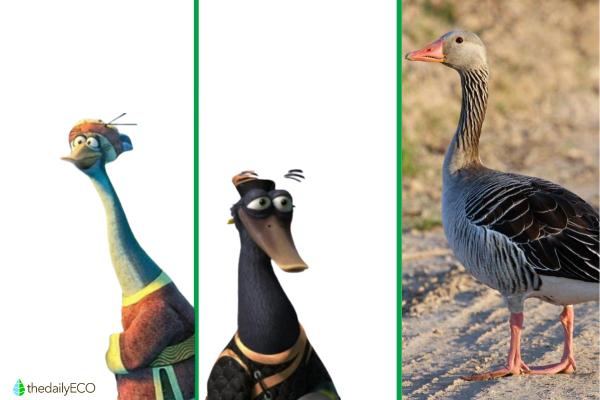
Li Shan (Giant Panda)
Li Shan, often simply called Li, is a revelation for Po in Kung Fu Panda 3. We discover he's Po's biological father, sharing Po's species, the giant panda (Ailuropoda melanoleuca). Years ago, the villainous Lord Shen and his wolf army attacked Li's village. In the chaos, Li was tragically separated from his wife and infant son, Po. This event undoubtedly shaped Li's life, leaving a deep yearning to find his family.
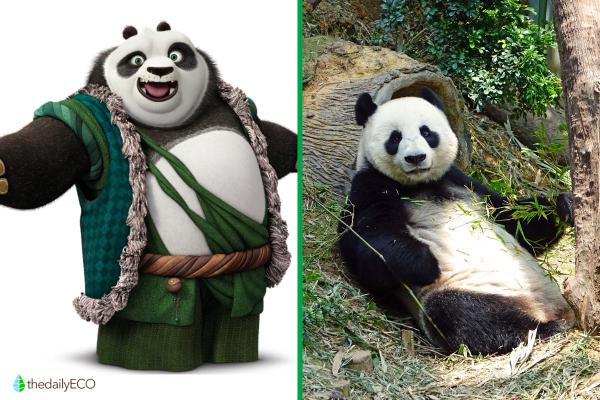
Lord Shen (Indian peafow)
Lord Shen is a leucistic Indian peafowl. White peafowls are Indian Blue Peafowls (Pavo cristatus) with a rare genetic mutation called leucism. The leucistic mutation is relatively rare and recessive, meaning both parents need to carry the gene for the offspring to exhibit the white coloration.
White can symbolize purity in some cultures, but it can also represent coldness or emptiness. In Lord Shen's case, the white feathers might signify his ruthlessness and lack of compassion. Lord Shen is Po's primary adversary in the Kung Fu Panda series. Notable for his intelligence, ambition, and cruelty, Shen harbors a deep-seated malice that compels him to eradicate panda populations in China.
The Indian peafowl holds a special place in Indian culture and is considered the national bird of India. They are depicted in art, literature, and mythology, often symbolizing beauty, royalty, and pride.

The Soothsaye (Goat)
The Soothsaye plays the role of a fortune-teller in Kung Fu Panda 2 and her character is inspired by a goat (Capra hircus).
In the movie, the Soothsaye is the wise and mysterious advisor to the Peacocks in Kung Fu Panda 2. She can see glimpses of the future. Her cryptic messages help those who seek her guidance, even if they're hard to understand.
In general, goats are social animals and prefer to live in herds. They communicate with each other through bleating, and mother goats will call to their young (kids) to stay close. Despite their seemingly bulky appearance, goats are surprisingly agile climbers. Their strong legs and hooves allow them to navigate steep terrain and even climb trees.

Zhen (Corsac fox)
Zhen, a sly individual with a resemblance to a Corsac fox (Vulpes corsac), is a welcome addition to the Kung Fu Panda universe. The Corsac fox thrives in open grasslands, steppes, and semi-deserts throughout Central Asia, ranging from Mongolia and northern China to Iran and Afghanistan.
Primarily carnivorous, the Corsac fox is an opportunistic hunter. Their diet consists mainly of small rodents like voles, gerbils, jerboas, and hamsters. They will also eat insects, lizards, birds, and even fruits and vegetables on occasion.
True to the reputation of foxes in folklore and popular culture, Zhen is a cunning thief. This playful nod to real-world perceptions adds depth to her character. However, an interesting twist emerges when Po, the ever-enthusiastic Dragon Warrior, apprehends her. Instead of simply jailing Zhen, Po has a surprising plan. He decides to take her on a new, important mission. This unexpected partnership sets the stage for an intriguing dynamic.

The Chameleon (Chameleon)
The Chameleon is an evil sorcerer capable of shape-shifting and stealing kung fu abilities using magic. It is inspired by the veiled chameleon (Chamaeleo calyptratus), a lizard native to the mountainous regions of Yemen and Saudi Arabia. They are one of the larger chameleon species, with males reaching lengths of up to 55 cm (22 inches) and females around 35-40 cm (14-16 inches).
They can change color to blend in with their surroundings, though their base color is typically green, brown, or gray with various patterns. They can also display vibrant colors during displays of dominance or communication. Interestingly, in the movie, this villain possesses the ability to shapeshift into anyone they desire. This creates a significant challenge for Po and the other characters, as they never know who to trust.
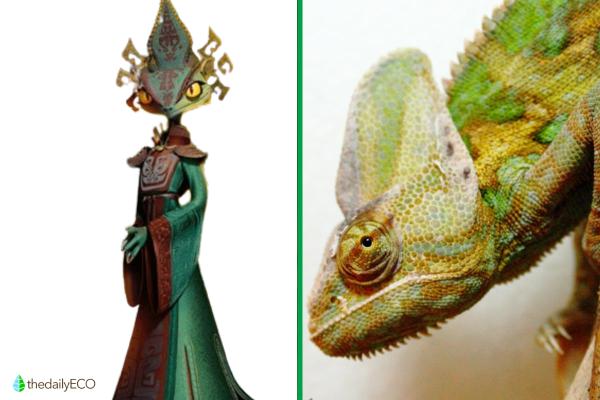
If you want to read similar articles to Exploring the Animals of Kung Fu Panda, we recommend you visit our Facts about animals category.







